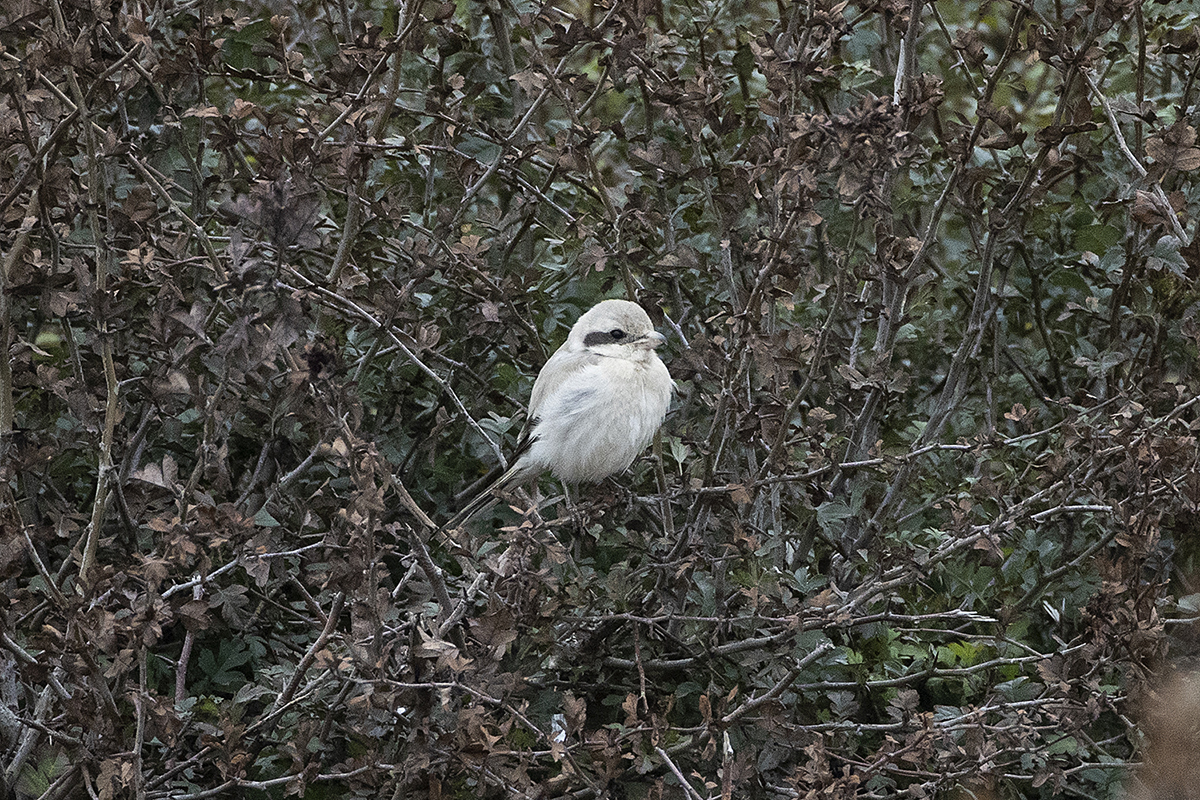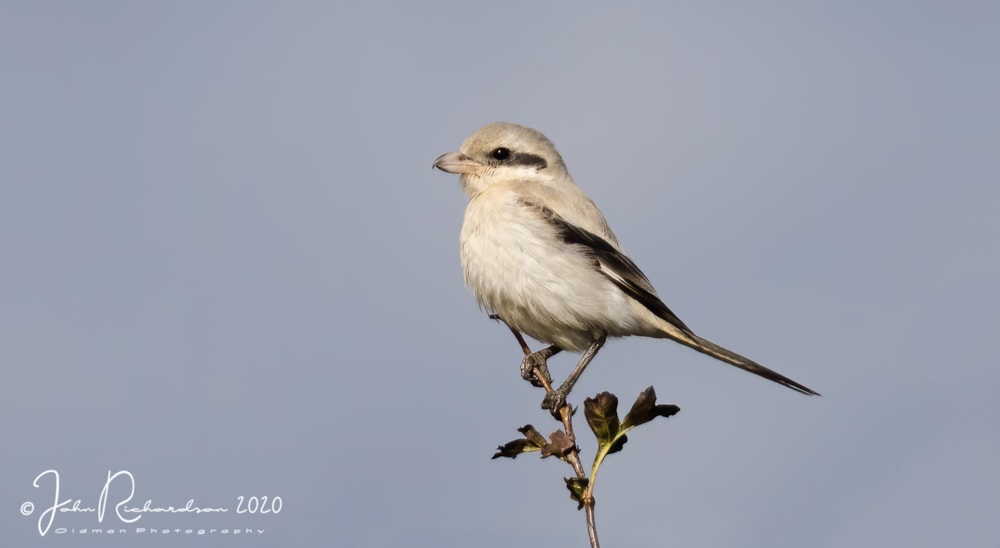Easterly winds in autumn always provide a heightened sense of anticipation for those living on the east coast. When they originate from deep within Europe and extend to beyond the Caspian Sea, then that excitement reaches fever pitch. The outlook for 2-3 October 2020 was exactly that. The weather over the weekend of 3-4 October was appalling, with near constant rain, but had already produced Rustic Bunting and Booted Warbler on 3 October – both good birds in Suffolk.
On Sunday 4 October, after enjoying some great views of a Radde's Warbler in Southwold, I headed north to try to catch up with a Great Grey Shrike at Kessingland. On the long walk down to Beach Farm I bumped into local birder Carl Buttle, who was leaving the site, and who had previously put out news that he had seen the bird. He kindly told me where he had seen it.
Near the seaward end of the track I glimpsed a shrike flying into a dead tree and I quickly confirmed that it was indeed a Great Grey Shrike, showing a bold black mask extending right up to the black bill. I quickly removed the waterproof covering from my camera, but when I looked up it had gone. I walked along the cliff and eventually spotted a pale blob sitting in the middle of a hawthorn about 400 m inland; a quick look through my telescope confirmed that it was 'the' shrike.

Steppe Grey Shrike at Benacre, Suffolk, on 4 October 2020 (Andrew Moon).
I retraced my steps and walked along the hedge line towards the shrike; as I crested the hill I could see that it was still present. I replaced my telescope with my camera on the tripod and started to take some pictures, slowly approaching the bird, which didn't move. It was face on to me all the time. I was able to get as close as about 60 m, when it started to rain more heavily and the bird (probably in response to the rain) proceeded to clamber into the bush. I could still see it, but it was difficult to note any more details. Knowing that Great Grey Shrikes are normally very flighty and that other people were in the area looking for the bird, I decided to leave after putting news out that the it was still present.
Because the weather was so bad and my camera, as well as myself, were soaking wet (for the second day in a row!), I didn’t bother to dig my glasses out to review the images at the time.
It wasn’t until that evening that I finally got around to uploading the photos. One look quickly revealed that this was no ordinary Great Grey Shrike; in fact, it was incredibly pale grey, with an even paler grey bill and a dark tip to both mandibles, in addition the rather dull black eyeline didn’t extend to the bill. I knew without resorting to any books that it was a perfect match for Steppe Grey Shrike – a bird I can remember seeing incredibly well at Holland-on-Sea in Essex in 1996.
I texted a shot of the bird to Dave Fairhurst, stating that it looked a 'dead ringer' for Steppe Grey Shrike. His reply was favourable and after involving Brian Small (along with a few more images), it was confirmed that it was indeed a Steppe Grey Shrike. The news went out.

The Steppe Grey Shrike went on to show rather well during subsequenty days (John Richardson).
The next day I arrived on site just after sunrise (it was still raining!) and walked down to the bird's favoured bush. When I was some distance away, I glimpsed a pale bird fly out of the bush, drop down into the field and then fly back. It was still there!
Frustratingly, although I knew it was still in the bush, I couldn't see it. In the end I was parallel with the bush and no more than 5 m away, and after staring for some time, I finally saw it deep within the hawthorn and not willing to show itself. I managed to get some shots at close range, but they were all obscured one way or the other and I wasn't able to see all of the bird at once. I knew that Steppe Grey Shrikes are typically approachable and unafraid, but this was ridiculous. I was able to confirm the more extensive white primary patch, compared with Great Grey Shrike, and subsequently, that it did not extend onto the secondaries in flight. The nearby Great Grey Shrike remained throughout this bird's stay, providing a useful comparison for visiting birders.


